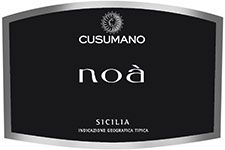
Diego Cusumano
Diego Cusumano
Biography
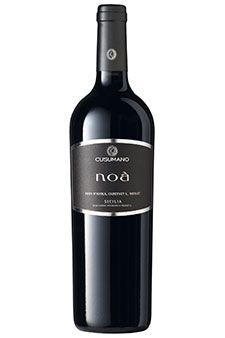
The experience of Alberto and Diego Cusumano in the field of wine is not recent history, but goes back some forty years when their father, proprietor of vat landed holdings in various parts of Sicily, produced concentrated must for export to northern Italy.
Wine itself was something which arrived later, in the 1980’s, when the Cusumano realized that the future needed to be planned and that large-scale production had little future. It was then that a process of selection began to be practiced, planting the finest clones of the traditional grape varieties of Sicily, Insolia and Nero d’Avola, and the first plantings of such international varieties as Syrah, Cabernet Sauvignon, and Chardonnay.
Truly fundamental changes only began in the mid-1990’s, when Diego and Alberto Cusumano joined the family firm. The objective of the brothers, however, was not to perpetuate the ideas of their father but to base their work on quality wine.
Dynamic entrepreneurs, Diego and Alberto work with the advantage of a very large patrimony: 1000 acres of vineyards divided among seven different estates, for the most part in the finest areas of Sicily such as Alcamo, Monreale, Partinico, Ficuzza, and Bufera, vineyards which yield an annual production of two million bottles.
Their young firm has, in a short space of time, become an important market phenomenon with a world-wide reputation stretching from Russia to the USA based a happy combination of modern technology and territorial character. One of the most representative wines, Angimbè, a blend of 70% Insolia and 30% Chardonnay, was selected by the Wine Spectator in 2004 as one of the 100 finest wines of the world and, in 2008, as one of the finest values in Italian wine.
The two crus of the house are unquestionably Noà, a blend of 40% Nero d’Avola, 30% Cabernet, and 30% Merlot, and Sàgana, 100% Nero d’Avola, both “three goblet” wines of the authoritative Gambero Rosso guide to Italian wine.
The most important objective at the moment is to create a solid image of the wines and the firm on an international level, the emblem of a Sicily of true quality. Both Diego and Alberto dedicate a large part of their time to the realization of this goal.
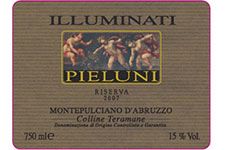
Dino Illuminati
Dino Illuminati
Biography
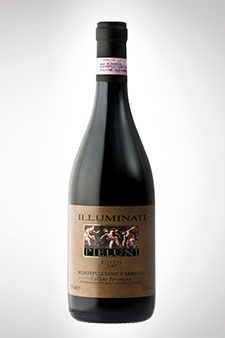
The vineyards of the Illuminati family are located between Controguerra and Neretto in the northern part of the province of Teramo, between the Apennine chain and the Adriatic Sea at an altitude of 1000 feet above sea level. At the end of the 19th century Nicola Illuminati founded the Fattoria Nicò winery, which now, a century later, is directed by his grandson Dino with the aid and assistance of wife and children. Total vineyard surface is 275 acres, with an annual production of 1.2 million bottles of fine overall quality. The story of this firm has unquestionably been a stimulus for other producers of the region, habituated until recently to the sale of their grapes to others who used them to produce blending wine for other regions in less successful vintages. Thanks to its pioneering work of the Illuminati, who developed an entire production cycle from grapes to the bottle, the oenology of the Abruzzo is well considered both in Italy and abroad. The two major crus of the house are both Montepulciano d’Abruzzo Colline Teramane Riserva DOCG, and Pieluni has been particularly appreciate and given important recognition. The harvest for this wine is a late one and is carried out by hand during the last ten days of October. The grapes are destemmed, pressed softly, and then fermented in stainless steel tanks at temperatures of 84-86° Fahrenheit. After twenty days of skin contact and at the end of the alcoholic fermentation, the wine goes through a malolactic fermentation, then racked and aged for two years in small oak barrels. After bottling it is given a further 14-15 months of bottle ageing in natural grottoes in order to bring out all of the power, structure, and complexity of its personality. The other cru is the Montepulciano d’Abruzzo Doc Riserva Zanna, produced only in superior vintages. The Zanna vineyard is situated on hills to the right of the Tronto river as it descends towards the Adriatic Sea, at 950 feet above sea level in the township of Controguerra. The local climate is mild and the grapes are trained in an overhead system with 400 vines per acre. These are among the last grapes to be picked: after a rigorous thinning of the crop and a careful selection of the bunches, the grapes are destemmed, pressed, and fermented in stainless steel tanks at a maximum temperature of 86° Fahrenheit. The wine is then racked into Slavonian oak casks for an aging period of 24-26 months.
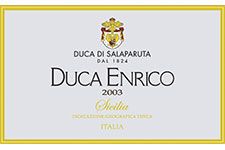
Duca di Salaparuta
Duca di Salaparuta
Biography
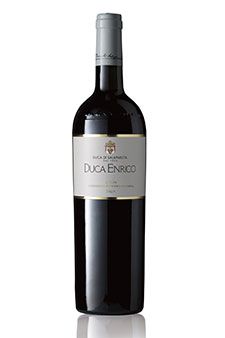
Giuseppe Alliata was prince of Villafranca and Duke of Salaparuta, but he was a man of progressive ideas. It was in 1824 that he decided to ferment the Inzolia grapes of his estate in the Corvo zone of Casteldaccia; he wished that his own personality be mirrored in the wine he intended to produce for the illustrious hosts who visited his residence of Villa Valguarnera. And thus Corvo was born, an aristocratic, non-conformist wine which soon left the salons of Sicily to compete with the major labels of its time. The challenge, to produce international-level wines with Sicilian grapes, was taken up by his son Edoardo as well, and then by his grandson Enrico. The last of these was a fascinating personality, a philosopher, a musician, a pioneer in the promotion of the Mediterranean diet. Under his guidance the winery grew, with an eye to international experiences as well. At the death of Duke Enrico, however, his daughter Topazio did not feel up to direct the property, by now of an important size, and in1961 sold it to a financial structure controlled by the regional government of Sicily, Espi, under which it achieved important success. Exactly forty years later, in May 2001, the house was sold once again: the firm was privatized, auctioned to potential purchasers. The highest bidder was the Illva Saronno through a firm it controlled in Sicily, Florio of Marsala. The strategy of Augusto Reina, CEO of Illva Saronno, was well thought-out: create a Sicilian wine powerhouse by taking advantage of the synergy between two brands, both of international level. Florio, number one in he field of Marsala and passito wines, and Duca di Salaparuta, number one in table wine on the island with two major wines in its portfolio: a red wine of the calibre of Duca Enrico, a Nero d’Avola, and a structured white wine, Bianca di Valguarnera, an Inzolia. In order to achieve his goals, Reina merged the two houses into a new company, Duca di Salaparuta S.p.A. invested 30 million euro to modernize the Duca di Salaparuta cellars at Casteldaccia and at Aspra. The key investment was for vineyards. Although producing 9 million bottles per year, the company did not own its own vineyards but purchased grapes from selected zones and cultivators. The purchase of the large Suor Marchesa property, close to 240 acres at Butera, a fine area for Neor d’Avola, and of 22 acres at Castiglione di Sicilia on the slopes of Mount Etna, with an extraordinary potential for Nerello Mascalese and Pinot Noir, are only the beginning of a program to endow Duca di Salaparuta with crus suitable to its ambitions.

